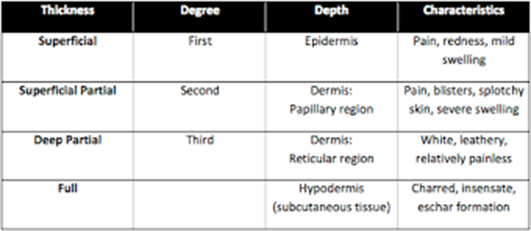A nurse is caring for a client who has shingles with multiple skin lesions. Which of the following actions by the nurse require intervention nurse's supervisor?
The nurse wears gloves when providing direct care to the patient.
The nurse admits another client who has shingles to the client’s double room.
The nurse wears a gown when bathing the client.
The nurse wears an N95 respirator mask
The Correct Answer is B
Choice A rationale: Wearing gloves is appropriate when providing direct care to a client with shingles to prevent the spread of the virus.
Choice B rationale: Shingles is caused by the varicella-zoster virus, and it is highly contagious. Placing a client with shingles in a double room increases the risk of spreading the virus to other clients, especially those with compromised immune systems.
Choice C rationale: Wearing a gown is appropriate when there is a risk of contact with the client's lesions to prevent the spread of the virus.
Choice D rationale: While wearing a mask may be indicated for certain respiratory conditions, it is not typically required when caring for a client with shingles.
Nursing Test Bank
Naxlex Comprehensive Predictor Exams
Related Questions
Correct Answer is B
Explanation
Choice A rationale: Wearing gloves is appropriate when providing direct care to a client with shingles to prevent the spread of the virus.
Choice B rationale: Shingles is caused by the varicella-zoster virus, and it is highly contagious. Placing a client with shingles in a double room increases the risk of spreading the virus to other clients, especially those with compromised immune systems.
Choice C rationale: Wearing a gown is appropriate when there is a risk of contact with the client's lesions to prevent the spread of the virus.
Choice D rationale: While wearing a mask may be indicated for certain respiratory conditions, it is not typically required when caring for a client with shingles.
Correct Answer is ["A","B","E"]
Explanation
Choice A rationale: partial-thickness burns are usually characterized by the formation of blisters as a result of increased capillary permeability resulting in edema formation separating the epidermis from the dermis.
Choice B rationale: wound blanching with pressure is expected in partial-thickness burns due to compromised blood circulation.
Choice C rationale: This is not a typical finding in a partial-thickness burn.
Choice D rationale: this is incorrect since partial-thickness burns involve damage to the epidermis.
Choice E rationale: nerve endings are damaged in partial-thickness burns thus making the area sensitive to touch.

Whether you are a student looking to ace your exams or a practicing nurse seeking to enhance your expertise , our nursing education contents will empower you with the confidence and competence to make a difference in the lives of patients and become a respected leader in the healthcare field.
Visit Naxlex, invest in your future and unlock endless possibilities with our unparalleled nursing education contents today
Report Wrong Answer on the Current Question
Do you disagree with the answer? If yes, what is your expected answer? Explain.
Kindly be descriptive with the issue you are facing.
